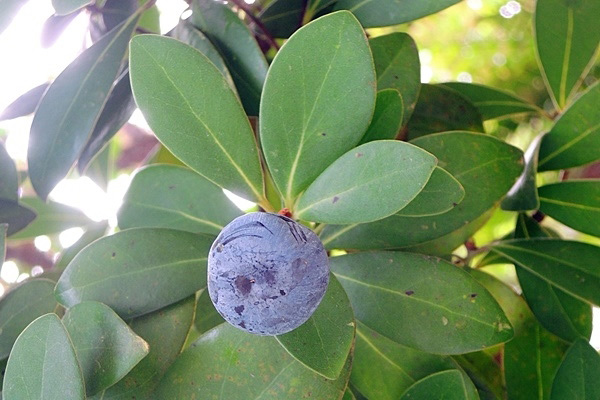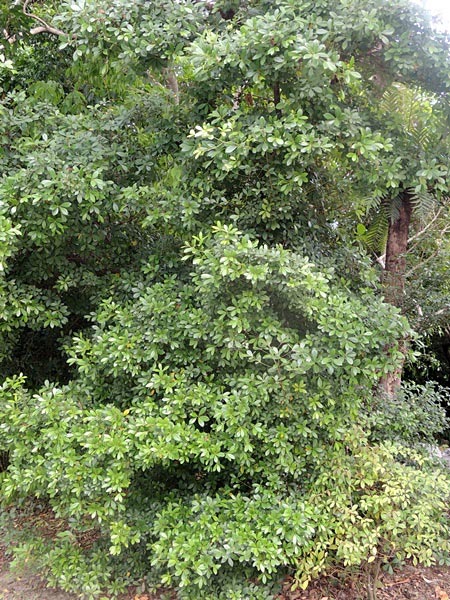Machilus obovatifolia
The obovate-leaved machilus is an evergreen shrub or small tree and a rare plant endemic to Taiwan. It is found only in the Hengchun Peninsula at the southernmost tip of Taiwan, mainly south of Fenggang Creek and in the surrounding mountainous areas. It is more likely to be found in areas directly exposed to strong winds or near the coast.
The most distinctive feature of the obovate-leaved machilus is its small, obovate leaves clustered at the tips of its branches. Compared to other plants in the same genus, its rounded, blunt leaf tips and gradually narrowing leaf bases set it apart. Additionally, its leathery leaves with smooth surfaces are believed to be a morphological adaptation to withstand strong coastal winds. Although the yellow-green flowers of the obovate-leaved machilus are inconspicuous when they bloom in the spring, its fruits are a major highlight. The fruits of the obovate-leaved machilus are spherical berries that turn purplish-black when ripe, covered with a fine white powder on their surface. They appear round and adorable, resembling black pearls coated in sugar frosting, making them irresistibly charming.
The obovate-leaved machilus has a beautiful shape and is drought- and wind-resistant, with a high tolerance for adverse environmental conditions. It is suitable for planting in urban environments for ornamental purposes and can be used for landscaping, hedges, windbreaks, or street trees. The obovate-leaved machilus in this museum is planted along the central pathway near the steps in front of the Tropical Rain Forest Greenhouse in the Monsoon Rain Forest Area of the Botanical Garden.

